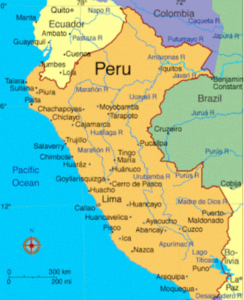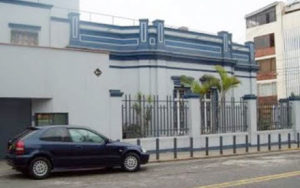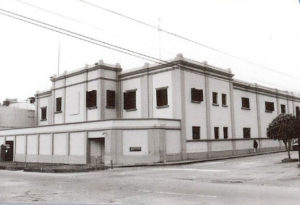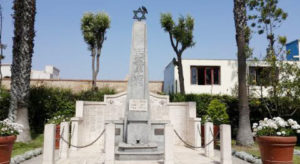 Peruvian Jewry dates back to the Spanish colonial period when Iberian Jews, seeking refuge from the inquisition, made their way to the new world. In the middle of the 1800s the ideas of the enlightenment spread to South America. This allowed the few Jews that were left to come out of hiding. They established the Jewish community that is still in existence today. They called this new community La Sociedad de Beneficencia.
Peruvian Jewry dates back to the Spanish colonial period when Iberian Jews, seeking refuge from the inquisition, made their way to the new world. In the middle of the 1800s the ideas of the enlightenment spread to South America. This allowed the few Jews that were left to come out of hiding. They established the Jewish community that is still in existence today. They called this new community La Sociedad de Beneficencia.
Central European Jewish immigrants that came in the 1870s, followed in 1880 by North Africans. Before and after World War I, Jews from Turkey and Syria came to Lima to escape their countries that were damaged by the war. The first Ashkenazi and Sephardi Jews arrived in Peru around 1910. By the end of the decade, there were approximately 400 Jews living in Lima. Following in the 1920s, immigration continued to the country, especially by Ashkenazi Jews. The Ashkenazim founded the Unión Israelita del Peru in 1923.
 However, In 1938, the Peruvian government completely banned Jewish immigration. At this time, Peru had some 2,500 Jewish residents. Jose Maria Barreto a Peruvian diplomat in Switzerland used his position to attempt to rescue Jews during the Holocaust.
However, In 1938, the Peruvian government completely banned Jewish immigration. At this time, Peru had some 2,500 Jewish residents. Jose Maria Barreto a Peruvian diplomat in Switzerland used his position to attempt to rescue Jews during the Holocaust.
He issued 27 Peruvian passports to 58 Jews, however, the Ministry ordered the cancellation of the passports issued and closure of the Peruvian consulate in Geneva. In addition, Barreto was fired from his position and dismissed from Peru’s Foreign Ministry.
 In Lima, they set up Jewish school in 1946, after the second World War. Ever since then about 80% of the community have sent their children to this school. An Ashkenazi and two Sefardi synagogues were built. Two houses for the elderly were set up and funeral committees were established. Before and after the Second World War, some Ashkenazic Jews, chiefly from Western and Eastern Slavic areas and from Hungary, migrated to Peru, chiefly to the capital Lima.
In Lima, they set up Jewish school in 1946, after the second World War. Ever since then about 80% of the community have sent their children to this school. An Ashkenazi and two Sefardi synagogues were built. Two houses for the elderly were set up and funeral committees were established. Before and after the Second World War, some Ashkenazic Jews, chiefly from Western and Eastern Slavic areas and from Hungary, migrated to Peru, chiefly to the capital Lima.
In 1970 the Jewish community reached a peak of 5,200 members, but it has slowly declined since then. Since 1990, Jews started to immigrate to Peru from other places in South America.
 There are two groups of Jews in Peru, who should be mentioned. The B’nai Moshe, sometimes referred to as Inca Jews, are former Christians. With no knowledge of Jewish custom and ritual, they began to practice an iconoclastic form of Judaism in the 1950s, inspired by the Psalms. They ate only fruit, vegetables and fish with scales. They read from a homemade Torah scroll and prayed wearing homemade prayer shawls. They used the sea as a ritual bath, and the men traveled to Lima to be circumcised. For 30 years, the B’nai Moshe were ignored. Eventually they were converted.
There are two groups of Jews in Peru, who should be mentioned. The B’nai Moshe, sometimes referred to as Inca Jews, are former Christians. With no knowledge of Jewish custom and ritual, they began to practice an iconoclastic form of Judaism in the 1950s, inspired by the Psalms. They ate only fruit, vegetables and fish with scales. They read from a homemade Torah scroll and prayed wearing homemade prayer shawls. They used the sea as a ritual bath, and the men traveled to Lima to be circumcised. For 30 years, the B’nai Moshe were ignored. Eventually they were converted.
 The other group are descendants of 19th century Moroccan Jewish adventurers who came to the Amazon jungle during the rubber boom. Since nearly all the Jews who originally settled here were men, their descendants could not attest to having Jewish mothers, ruling them out as being Jewish according to strict interpretations of Jewish law. The community has passed through generations of intermarriage but adhered to some Jewish traditions such as lighting candles on Friday night and burying their dead in what they call an Israelite cemetery.
The other group are descendants of 19th century Moroccan Jewish adventurers who came to the Amazon jungle during the rubber boom. Since nearly all the Jews who originally settled here were men, their descendants could not attest to having Jewish mothers, ruling them out as being Jewish according to strict interpretations of Jewish law. The community has passed through generations of intermarriage but adhered to some Jewish traditions such as lighting candles on Friday night and burying their dead in what they call an Israelite cemetery.
This group lives in Iquitos, a town more than a thousand miles from Peru’s coastal cities, accessible only by plane or river boat. They have little contact with the outside Jewish world. But the 170 member community clings fiercely to a Jewish identity. It was not until the l980s that the community of Iquitos was able to reawaken. Orthodox Jewish leaders rejected them because they considered that they were not true members of the faith, but, Conservative Jews patiently instructed them in full Judaic protocol while also coordinating formal conversion ceremonies. Many members of the Jewish Iquitos community resettled in Israel, where they made a very great effort to learn Hebrew and assimilate into a very different cultural environment.
Today the Jewish population of Peru is around 2,500.